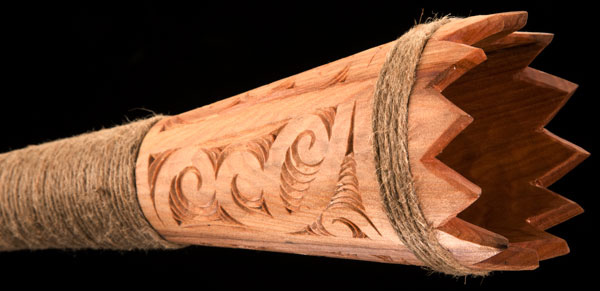Pūkāea is like a wooden trumpet. Pūkāea were used to announce relay signals at times of conflict and were also used to announce the rituals associated with the planting of kumara (sweet potato) and other crops.

Pūkāea - made of Kauri
Pūkāea: A long wooden war trumpet very like the solemn-sounding ceremonial trumpets of Tibet. It has a length of from 4 to 6 ft, a diameter of 1¼ in. at the blowing end and widens out to about 8 in. at the bell end. It is made in the same way as the putorino, hollowed out in sections and joined together again. The flare at the lower end is made by joining together a number of triangular wedges of wood which are gummed and bound to the end of the pipe. A few inches above the bell end, a tonsil or vibrating reed has been inserted in the pipe, perhaps in imitation of the human throat, but the purpose of this device remains in doubt. Compared with the simplicity of the koauau, nguru, and putorino, the Pūkāea, with its vibrating tonsil and bell-shaped end seems to be out of character. It gives forth a loud booming sound like the siren of a large ocean liner, and was used to sound an alarm in time of danger or to terrify an enemy by shouting curses through it.

Pūkāea - made of Kauri